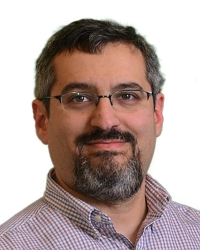TR2022-027
A Multi-Cluster-based Distributed CDD Scheme for Asynchronous Joint Transmissions in Local and Private Wireless Networks
-
- , "A Multi-Cluster-based Distributed CDD Scheme for Asynchronous Joint Transmissions in Local and Private Wireless Networks", IEEE Transactions on Wireless Communications, February 2022.BibTeX TR2022-027 PDF
- @article{Kim2022feb,
- author = {Kim, Kyeong Jin and Yeoh, Phee Lep and Liu, Hongwu and Guo, Jianlin and Orlik, Philip V. and Nagai, Yukimasa and Poor, H. Vincent},
- title = {{A Multi-Cluster-based Distributed CDD Scheme for Asynchronous Joint Transmissions in Local and Private Wireless Networks}},
- journal = {IEEE Transactions on Wireless Communications},
- year = 2022,
- month = feb,
- url = {https://www.merl.com/publications/TR2022-027}
- }
- , "A Multi-Cluster-based Distributed CDD Scheme for Asynchronous Joint Transmissions in Local and Private Wireless Networks", IEEE Transactions on Wireless Communications, February 2022.
-
MERL Contacts:
-
Research Areas:
Abstract:
In this paper, a multiple cluster-based transmission diversity scheme is proposed for asynchronous joint transmissions (JT) in private networks. The use of multiple clusters or small cells is adopted to reduce the transmission distance to users thereby increasing data-rates and reducing latency. To further increase the spectral efficiency and achieve flexible spatial degrees of freedom, we consider that a distributed remote radio unit system (dRRUS) is installed in each of the clusters. A key characteristic of deploying the dRRUS in private networks is the associated multipath-rich and asynchronous delay propagation environment. Therefore, we consider asynchronous multiple signal reception at the remote radio units and propose an intersymbol interference free distributed cyclic delay diversity (dCDD) scheme for JT to achieve the full transmit diversity gain without requiring full channel state information of the private network. The spectral efficiency of the proposed dCDD-based JT is analyzed by deriving a new closed-form expression, and then compared with link-level simulations for non-identically distributed frequency selective fading over the entire network. Due to its distributed structure, the dRRUS relies on backhaul communications between the private network server and cluster master (CM), which is the main backhaul connection, and between the CM to remote radio units (RRUs), which are the secondary backhaul connections. Thus, it is important for us to investigate the impact of reliability of main and secondary backhaul connections on the system. Our results show that the resulting composite backhaul connections can be accurately modeled by our proposed product of independent Bernoulli processes.

